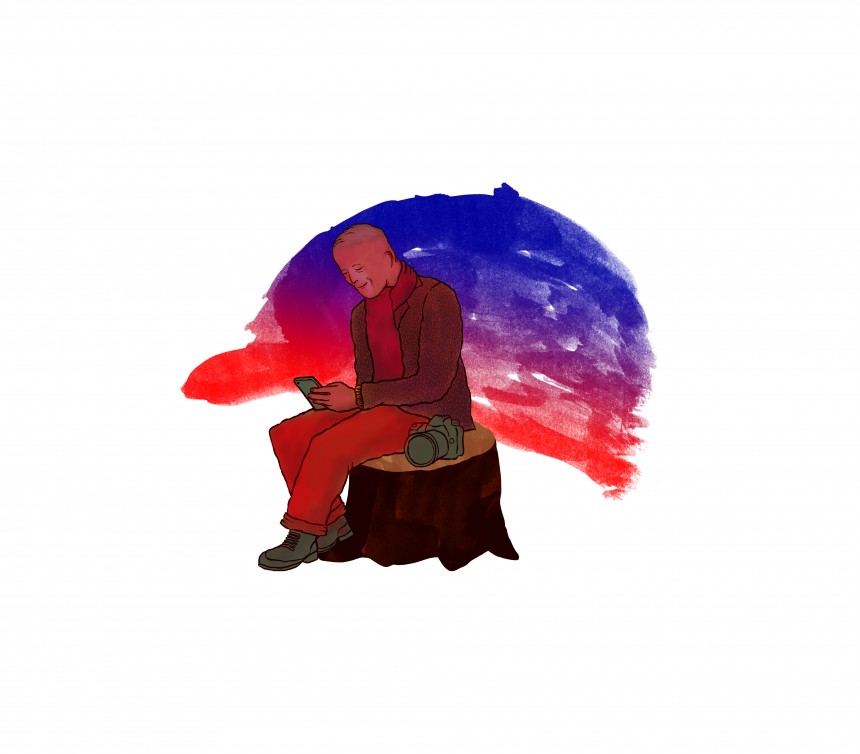
Last week, my grandpa bought an iPhone. He left the house at 8:30am and drove to the nearest Docomo shop (the only one in his county), heart set on discarding his senior-friendly flip-phone after ten years of knowing exactly which buttons to press to call whom.
He didn’t wake up that morning itching for the shiniest gadget on the market, like so many of us do today. In fact, he protested the notion of a smartphone for years. After decades of swearing by his landline and TV remote, his sudden conversion hinged on one factor: connection.
My grandpa lives in a small farming village in Gunma Prefecture, an hour away from Tokyo on the shinkansen. His daughter — my mom — lives an ocean away on the western coast of the United States. A phone call between them costs ¥39 per second. That’s ¥100 before either of them can finish asking, “How are you?”
It’s nearly impossible to explain what Wi-Fi is to an 86-year-old man, but anyone can appreciate the beauty of free communication — now possible via mobile apps like FaceTime and LINE. As it turns out, even a stubborn, old dog will take up new tricks if it means connecting with someone he loves.
He was first in line at the Docomo shop. The doors opened at 9am sharp and he emerged, three hours later, with a gleaming iPhone 6s in hand.
As the only millennial grandchild in the vicinity (I happened to be visiting that week), I was tasked with showing him the ropes, a process comparable to that of teaching a young child to read. I had seven days to instill in him the basics of making phone calls, video calls and navigating Japan’s most popular messenger app: LINE.
The first time he tried to open the phone app, he smashed his finger against the screen a dozen times before discovering the perfect touchscreen-tap. From there, I drafted manuals with color-coded pictures detailing which icons to press to do what. Even then, there seemed to be countless questions left unanswered. Practical ones, like how to use the microphone feature on the keyboard or how to add a new contact, which, on the worst days, I’d demonstrate five or six times over before he got it. Then, there were the more abstract inquiries like: “What is the internet?”
Despite a monumental learning curve, he was slowly getting the hang of it. By the end of the week, I would walk into the living room to find him in the middle of a video call with my uncle, or streaming concert footage of his favorite Showa era opera star on YouTube. For the first time in my life, these seemingly banal moments struck me as extraordinary.
Last week, an 86-year-old man joined the league of over 60 million smartphone users in Japan. Those born during the dot-com boom and after can finesse the technology like it’s in their DNA. Unlike my grandpa, today’s 14-year-olds will never need a manual. They have so much technical knowledge engraved in their intuition — maybe too much — and it’s so often the case that their devices consume them. My grandpa may not know how to use the microphone feature, but he knows exactly how to call his daughter in America, his son in Kyushu and me in Tokyo. In a way, he understands better than most of us what this technology is for.
My grandpa is a professional photographer. A couple times a year, he puts on his safari vest and drives deep into the mountains with his Pentax K-5IIs to capture the lush landscapes surrounding his village. Sometimes, he’ll stay put in one spot for hours, waiting for the sun to hit the right angle, revealing the perfect combination of light, shadow and color for his next masterpiece.
On the last day of my visit, he asked me if he could watch YouTube during one of these long intervals. I said it was possible, but that it would be difficult to get any signal up in the mountains. He nodded, a bit disappointed. Out of curiosity, I asked him what he’s been doing to kill time all these years.
“I just stared at the scenery,” he replied, matter-of-factly. I imagined him at the foot of a tree, overlooking the vast skies and flora of his homeland for hours on end, waiting, seeking the best shot, until finally — click.
I imagined him again at the foot of that tree, eyes glued to a phone screen, its speakers cutting the silence of the forest. Would he still be able to capture the perfect shot, or would he be too distracted to notice the sky changing colors? I quickly realized that there were certain zones of a person’s life that should remain untouched by the novelties of an era. Amidst the chaos of rapid, technological advancement, perhaps the most profound gesture is to resist change: To stay put, especially where it matters most.
“Sonomamadeiitoomou,” I told him. Don’t change.







